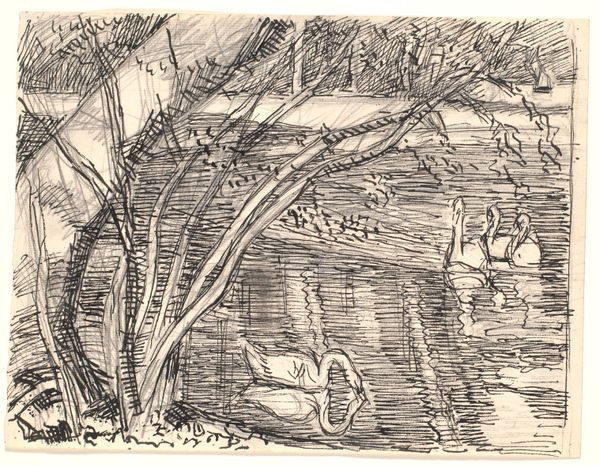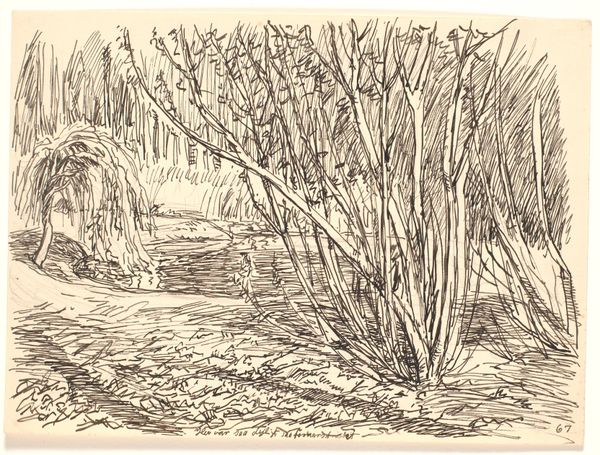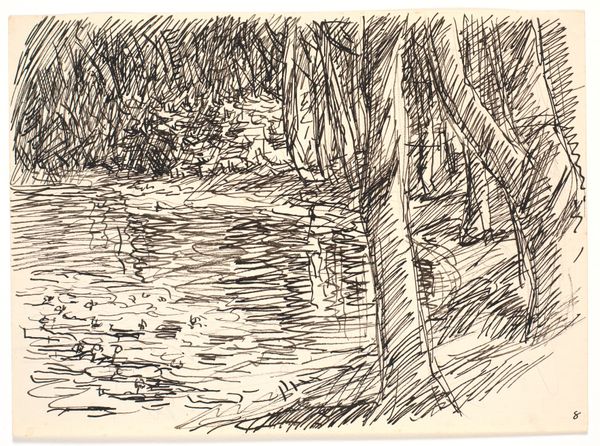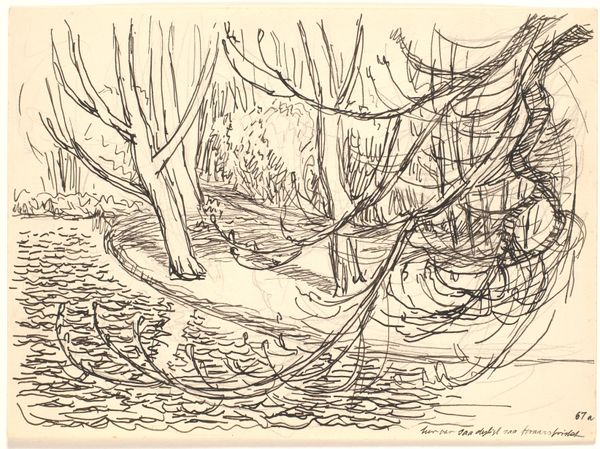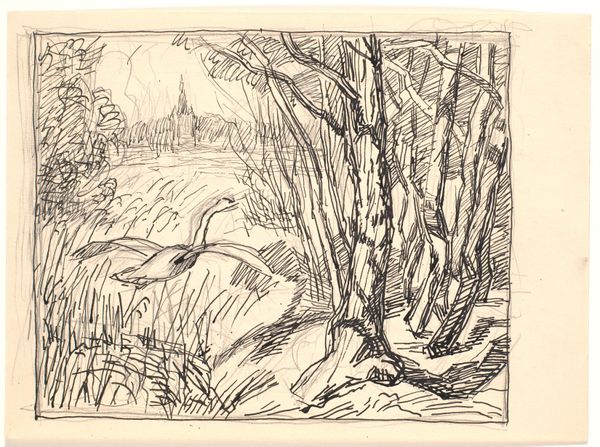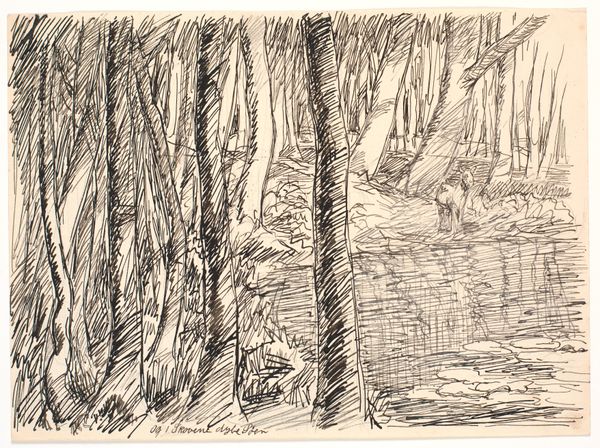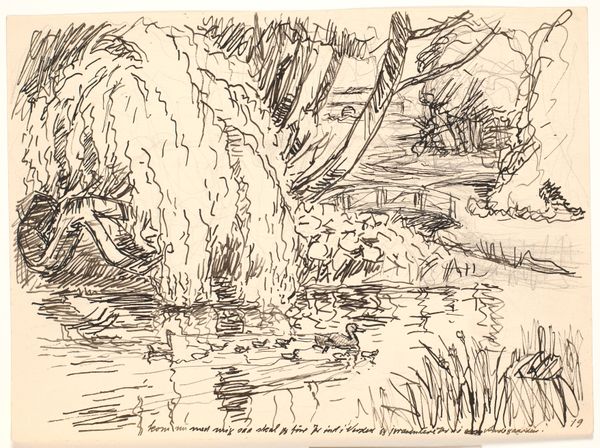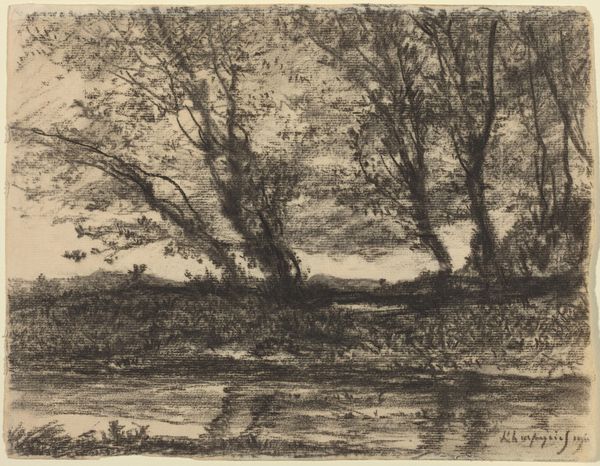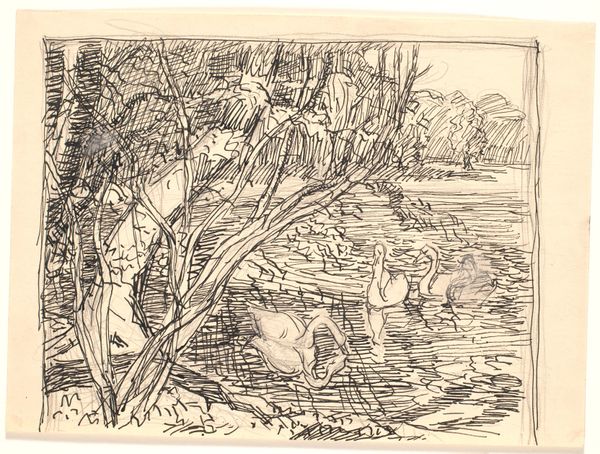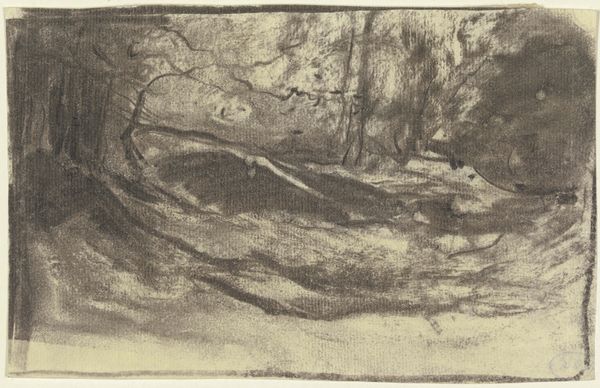
Studie til hængepilen i: Der har du Dine Øjne, sagde Døden... 1895 - 1902
0:00
0:00
Dimensions: 205 mm (height) x 273 mm (width) (bladmaal)
Curator: We’re standing before "Studie til hængepilen i: Der har du Dine Øjne, sagde Døden…" a study for the weeping willow in: "There you have your eyes, said Death..." by Fritz Syberg, created between 1895 and 1902. It's a pen and ink drawing currently held here at the SMK. Editor: Well, immediately, I notice the starkness. The light and shadow created by the pen work are so dramatic, especially around the base of the tree and on the path. There’s a tangible somberness evoked by the composition. Curator: Yes, the composition relies heavily on contrasting textures achieved through varying densities of line work. See how Syberg uses quick, hatching strokes to build depth and volume, especially noticeable in the foliage and ground cover? This technique contributes to the emotional weight. Editor: It is fascinating how Syberg has translated this landscape using simple materials. Pen and ink seem an apt medium to portray the raw essence of nature, as nature, in many ways, contains the material that makes up the medium, so they have an interconnected life-cycle. I imagine the repetitive motion of drawing these lines was quite meditative and became another part of the making process itself. Curator: Exactly. One might view this as an example of Symbolism. Notice how the drooping branches of the willow create a curtain-like effect? It emphasizes the visual theme of the piece as something that frames a hidden space or emotion. Also, there is the title connection, and how it brings death into focus. Editor: Connecting it back to its title, what I find interesting is that the materiality of the ink—a substance derived from nature itself—becomes a tool to confront a grand theme such as mortality. There is the use of ink and paper being transformed into an artwork depicting an introspective narrative—and the availability of art tools made it available to working class creators such as Syberg. Curator: I appreciate how your perspective grounds the artwork in its material reality and social circumstances, adding another layer to the visual analysis. It enhances our experience of the art. Editor: Indeed, understanding the role materials play can illuminate how art intersects with society.
Comments
No comments
Be the first to comment and join the conversation on the ultimate creative platform.
